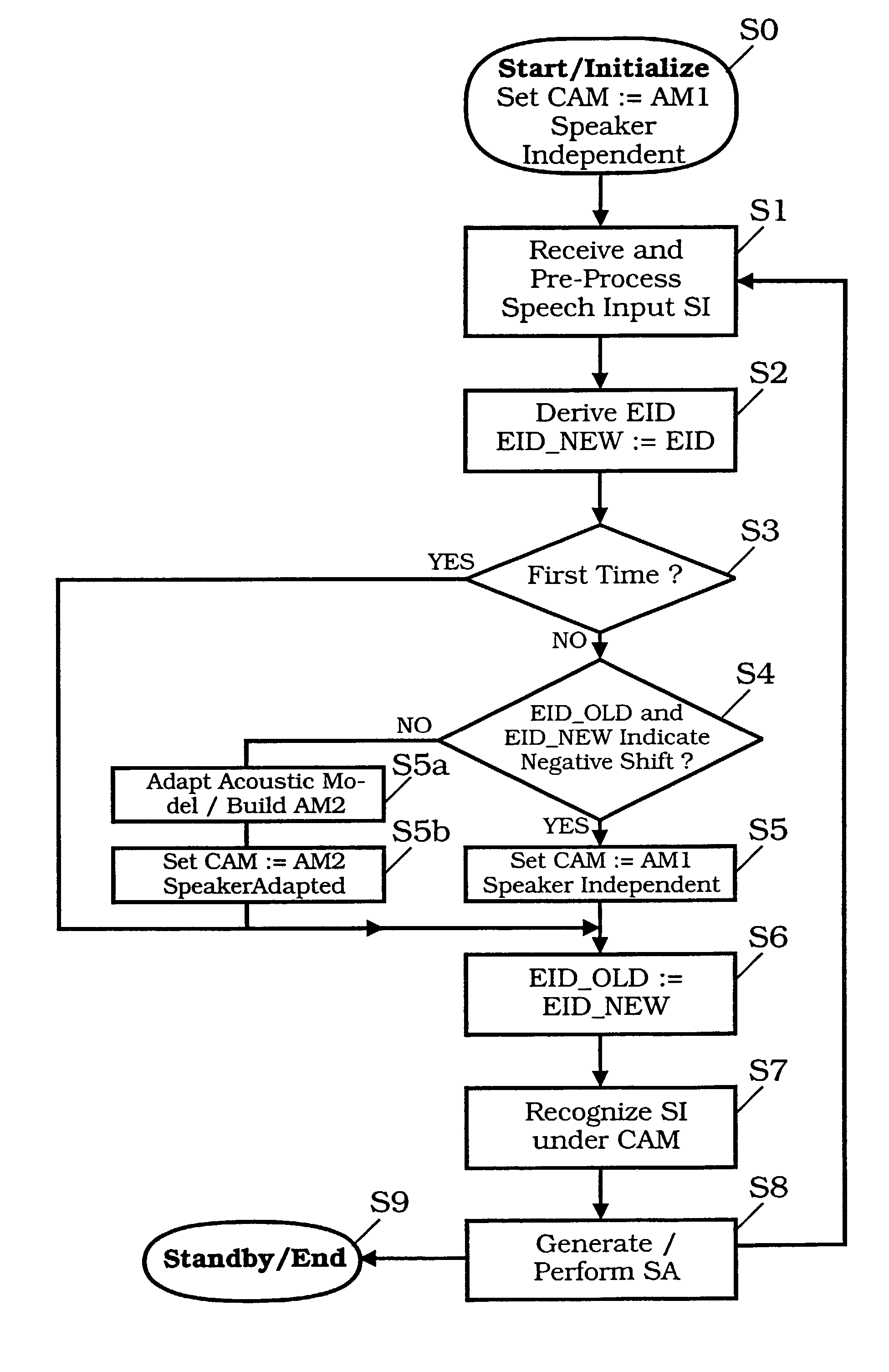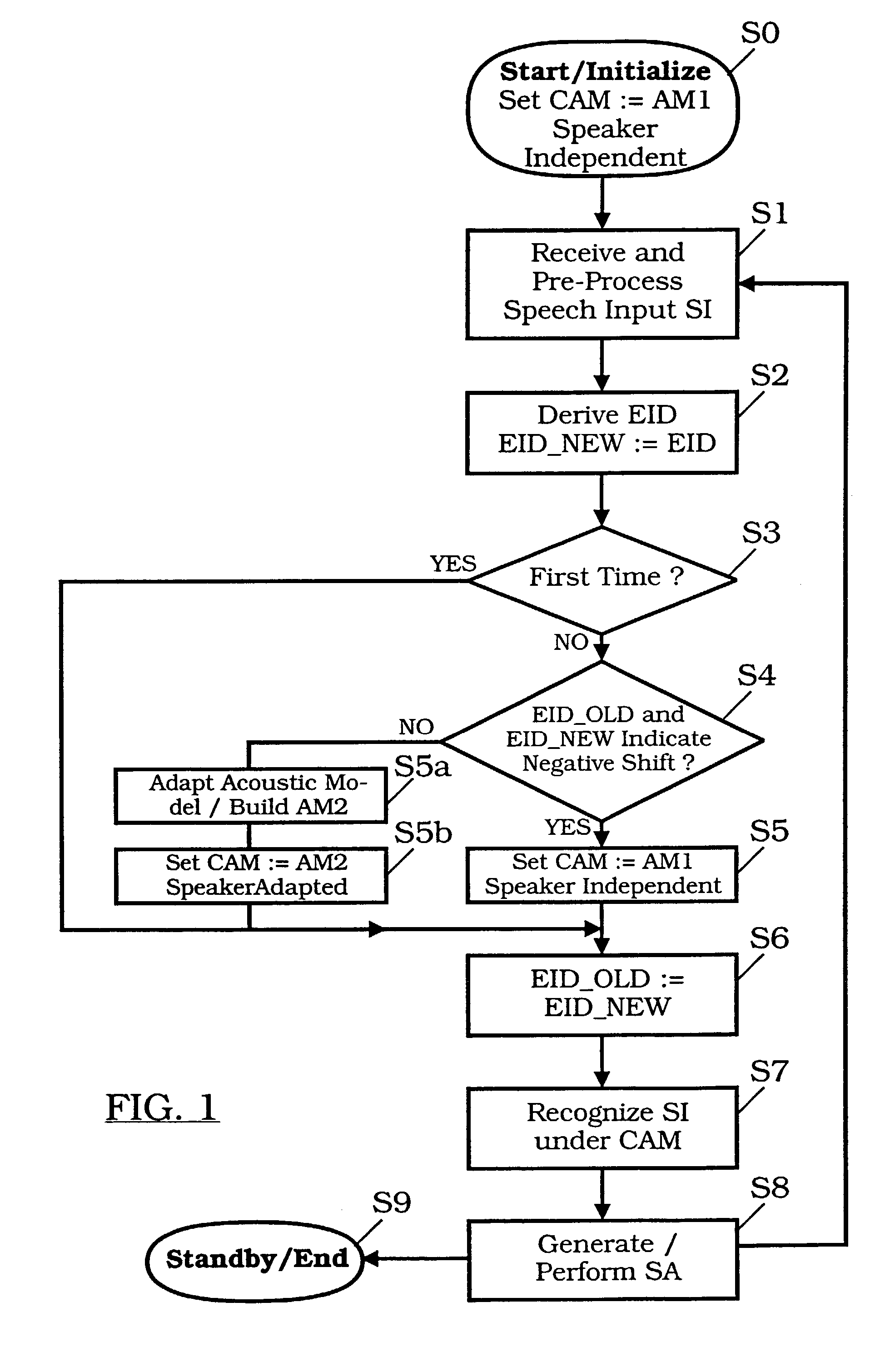Method for recognizing speech/speaker using emotional change to govern unsupervised adaptation
- Summary
- Abstract
- Description
- Claims
- Application Information
AI Technical Summary
Benefits of technology
Problems solved by technology
Method used
Image
Examples
Embodiment Construction
[0040]The schematical block diagram of FIG. 1 describes by means of a flow chart a preferred embodiment of the inventive method for recognizing speech / speaker in which emotional changes are used to govern unsupervised adaptation techniques, wherein for illustration a method for recognizing speech only is described.
[0041]In an initialization step S0 the method for recognizing speech according to the present invention is initialized, in particular by choosing a first acoustic model AM1 or a first set of acoustic models as a current acoustic model CAM or a current set of acoustic models, respectively. In the embodiment of FIG. 1 this initialization is performed to realize a speaker independent process, so that the underlying acoustic model AM1 is a speaker-independent acoustic model.
[0042]In the following step S1 a speech input SI of a current speaker or a user of the system is received and preprocessed.
[0043]In the next step S2 emotion information data EID are derived from the given s...
PUM
 Login to View More
Login to View More Abstract
Description
Claims
Application Information
 Login to View More
Login to View More - R&D
- Intellectual Property
- Life Sciences
- Materials
- Tech Scout
- Unparalleled Data Quality
- Higher Quality Content
- 60% Fewer Hallucinations
Browse by: Latest US Patents, China's latest patents, Technical Efficacy Thesaurus, Application Domain, Technology Topic, Popular Technical Reports.
© 2025 PatSnap. All rights reserved.Legal|Privacy policy|Modern Slavery Act Transparency Statement|Sitemap|About US| Contact US: help@patsnap.com


